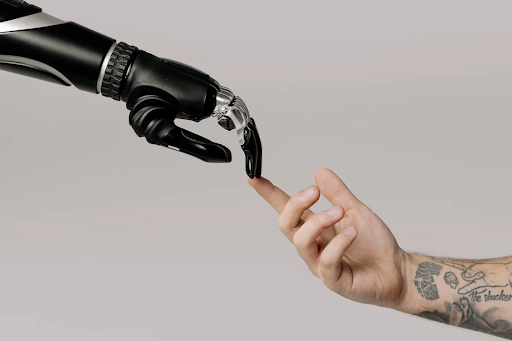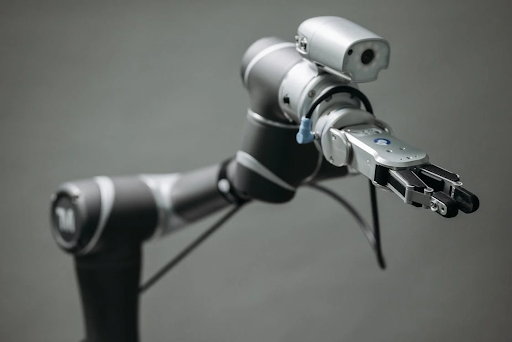What is Machine Vision?
Machine vision is an AI technology that enables machines to quickly recognize and analyze visual data with high accuracy. It allows industrial equipment to “see” what it is doing and make immediate and informed decisions based on what it observes. The increased efficiency and product quality it provides has made it one of the crucial technologies of industrial automation and a critical driver of Industry 4.0.
A machine vision system typically consists of a camera, lighting, and image-processing software. The camera captures and feeds the image to the software where it is processed to provide valuable insights and actionable information. Machine vision systems operate in various sectors, including manufacturing, robotics, and automotive, among others.
What Are Common Machine Vision Applications?
Machine vision systems are an integral part of many industries today. From manufacturing to robotics, it has revolutionized the way processes are optimized for better efficiency and accuracy. In this listicle, we’ll focus on the most common machine vision applications that are used in various industries.
- Visual Inspection: Machine vision is widely used in visual inspection to detect defects, misalignments, and surface quality issues in products. It can easily detect things that the human eye might miss and provide accurate measurements for quality control.
- Object and Flaw Detection: With machine vision, it’s easy to spot defects, flaws, and irregularities in products. Automated flaw detection systems can quickly identify areas that require attention, therefore, reducing the need for manual changes and repairs.
- Print Defect Identification: Automated machine vision systems are perfect for identifying defects in printed materials like labels, packaging, and even currency. By detecting flaws such as smudges, misprints, and bad ink coverage, machine vision ensures that only high-quality products are dispatched to the market.
- Object Identification: Automatic identification of objects like barcodes, serial numbers, characters, and other symbols is another common machine vision application. OCR technology is used for recognizing characters, while barcodes can be read and decoded using image analysis.
- Positioning/Locating: Machine vision systems are perfect for locating and positioning components in industrial manufacturing processes. With high-speed cameras and advanced algorithms, machine vision systems can find the exact location of parts and components to within micrometer precision.
- Measuring/Counting: Machine vision systems are used for measurement applications like counting and gauging. Products can be precisely measured, counted, and verified, allowing for better accuracy and control in production.
- Identifying, Sorting, and Tracking Products: Machine vision systems can quickly identify, sort, and track products, improving inventory management and shipping speed. From food production to e-commerce, machine vision plays an essential role in ensuring the timely and accurate delivery of products.
Indubitably, machine vision has become an indispensable tool for various industries, particularly machine vision in manufacturing and robotics, allowing for more precise and efficient operations. With further innovation in AI and computer vision technology, the use of machine vision will only expand to other sectors.
V2A028 TM Robot – Automotive Component Assembly at ChiangBin Enterprise Co (EN Sub)
How Machine Vision Contributes to Smart Manufacturing
Machine vision is revolutionizing the manufacturing industry by providing a reliable and efficient way to optimize production. By incorporating automated machine vision inspections and measurements, manufacturers can achieve high levels of precision with little to no human intervention. Here are some ways machine vision is contributing to smart manufacturing:
- Improve Product Quality: Machine vision systems can detect even minor defects in products, resulting in improved quality and reduced waste. This technology combines high-resolution cameras, lighting, and advanced software to provide a comprehensive view of products to identify defects such as scratches, dents, cracks, and more.
- Optimize Production Processes: By automating inspection tasks, machine vision systems eliminate the need for manual inspection, which leads to reduced labor costs, increased throughput, and improved productivity. Furthermore, the real-time data generated by the system helps manufacturers achieve better control over the production process, resulting in optimized production cycles.
- Increase Efficiency: Machine vision systems are incredibly accurate, and they can inspect items at a much faster rate than humans. The studies showed that the accuracy rate of an MV trained model in detecting workpieces was nearly 98%. This increased throughput reduces the time it takes to manufacture products, and reduces downtime between inspections or maintenance.
- Ensure Safety: Machine vision systems can identify potential safety hazards like human-machine interactions and alert operators to take appropriate measures. They can also monitor indicators such as temperature, pressure, and other environmental factors, thereby, reducing the risk of accidents.
- Enhance Maintenance: Machine vision systems can monitor equipment and provide early detection of potential issues before they cause breakdowns or failures. This allows for planned maintenance, resulting in reduced downtime and longer equipment lifespan.
The applications of machine vision in manufacturing are numerous, ranging from quality control and inspection to robotics and predictive maintenance. The impact of machine vision is undeniable as it is transforming manufacturing operations to become more efficient, productive, and cost-effective.
Explore Our Solutions to Enhance Machine Vision
TM 3DVision is a revolutionary product that takes machine vision to another level. It is an all-in-one solution that integrates a robot arm, 3D camera, and software to enhance cobot capability and improve accuracy.
Unlike traditional 2D machine vision functions, TM 3DVision can fetch three-dimensional coordinates, allowing it to identify and pick up objects with higher accuracy. Moreover, it can also measure the shape and size of an unknown object so that robots can recognize them even in challenging scenarios like high-speed assembly lines.
With machine vision in robotics, the need for human intervention is significantly reduced, and the accuracy of tasks such as material handling, inspection, and quality control is enhanced. TM 3DVision takes this capability a step further by offering a plug-to-use solution that eliminates the costs and efforts of integrating separate components.
V2A037TW TM AI Cobot – Techman Robot Vision Solutions
Discover Our Cobot’s Vision System
Techman Robot’s AI Cobot series offers a built-in vision system that plays an integral role in smart manufacturing. With advanced Al and machine learning features integrated into the system, the cobots are capable of performing complex calculations and analyzing data in real time. This allows them to make decisions quickly and accurately, hence, increasing their overall efficiency and adaptability.
TM AI Cobot’s built-in smart vision system provides a range of applications for manufacturing processes. For instance, material handling and palletizing are repetitive tasks that can be accomplished with great speed and accuracy by a machine vision system. AOI inspection can also be performed with greater efficiency, less error rates, and higher quality of production.


